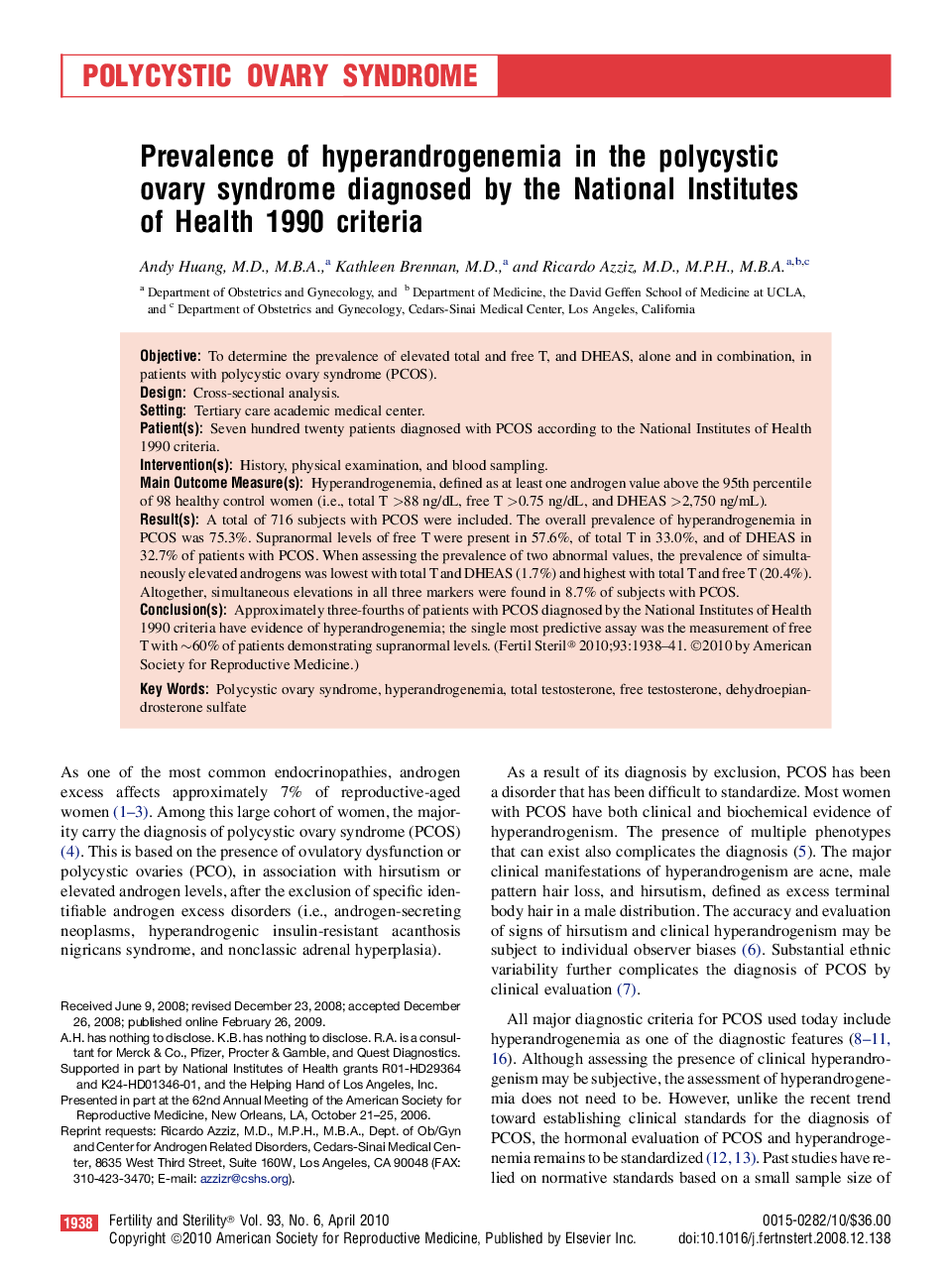| Article ID | Journal | Published Year | Pages | File Type |
|---|---|---|---|---|
| 3940839 | Fertility and Sterility | 2010 | 4 Pages |
ObjectiveTo determine the prevalence of elevated total and free T, and DHEAS, alone and in combination, in patients with polycystic ovary syndrome (PCOS).DesignCross-sectional analysis.SettingTertiary care academic medical center.Patient(s)Seven hundred twenty patients diagnosed with PCOS according to the National Institutes of Health 1990 criteria.Intervention(s)History, physical examination, and blood sampling.Main Outcome Measure(s)Hyperandrogenemia, defined as at least one androgen value above the 95th percentile of 98 healthy control women (i.e., total T >88 ng/dL, free T >0.75 ng/dL, and DHEAS >2,750 ng/mL).Result(s)A total of 716 subjects with PCOS were included. The overall prevalence of hyperandrogenemia in PCOS was 75.3%. Supranormal levels of free T were present in 57.6%, of total T in 33.0%, and of DHEAS in 32.7% of patients with PCOS. When assessing the prevalence of two abnormal values, the prevalence of simultaneously elevated androgens was lowest with total T and DHEAS (1.7%) and highest with total T and free T (20.4%). Altogether, simultaneous elevations in all three markers were found in 8.7% of subjects with PCOS.Conclusion(s)Approximately three-fourths of patients with PCOS diagnosed by the National Institutes of Health 1990 criteria have evidence of hyperandrogenemia; the single most predictive assay was the measurement of free T with ∼60% of patients demonstrating supranormal levels.
